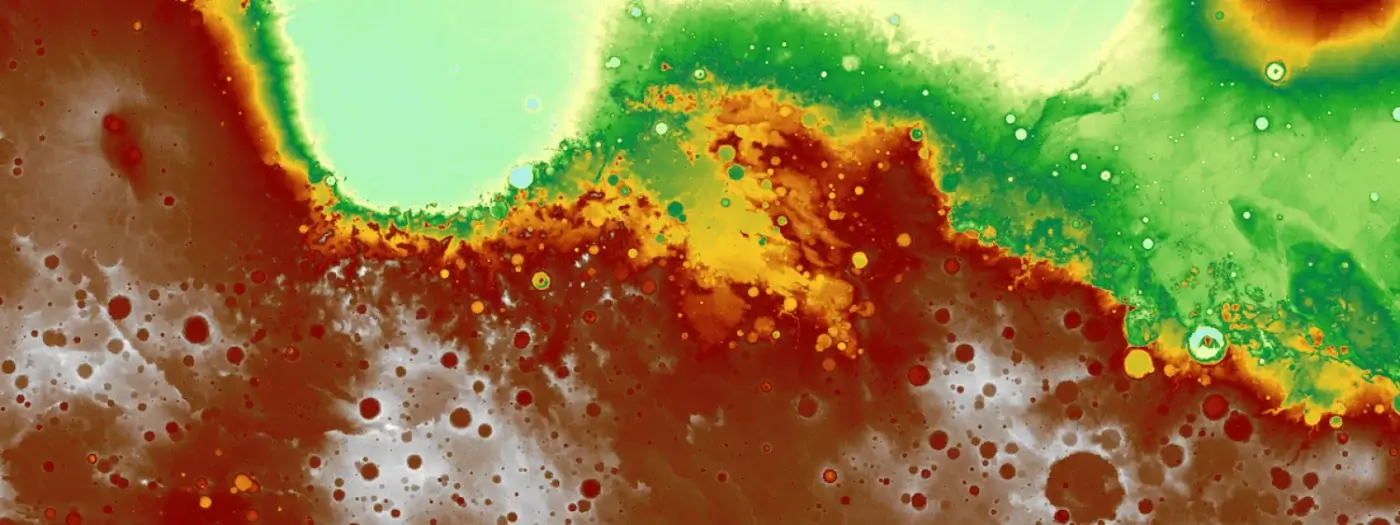
In ancient times, Mars had a much milder climate than it does today, with seasonal snowfall and rain. Scientists from the University of Colorado in the US have published the results of a new study on this.
Experts have used a computer to model the planet's ancient climate, taking into account its modern relief. According to them, precipitation served to form water flow channels on the surface of Mars billions of years ago.
Many scientists believe that there was a certain amount of water on Mars 4.1-3.7 billion years ago. However, its source is still unclear. At that time, the Sun was only 75 percent brighter than it is today, so some scientists have speculated that glaciers in mountainous regions near Mars' equator would have melted periodically.

Topographic map of the region near the Martian equator
Photo: NASA
In the new study, scientists used a computer to recreate the Martian terrain around the equator and considered several different scenarios. In some models, precipitation fell in the form of rain or snow, while in others, melting glaciers were taken into account. Then, they monitored how the water flowed over a long period of time.
According to the study, the valleys and hills on Mars could only have been formed as a result of precipitation. Because seasonal glacier melt cannot cause these formations.

A photo taken by NASA's Perseverance rover shows sandstone at the bottom of Jezero Crater. Scientists believe that this was formed due to small rock particles brought into the crater by water.
Photo: NASA
Experts note that these valleys begin at different heights, which indicates that they cannot be caused solely by glacier melt.
The research team compared the results of the computer simulation with real data obtained by NASA's Mars Global Surveyor and Mars Odyssey missions. The modeling, which includes precipitation, turned out to be much closer to the real relief of Mars.
In particular, one of the images sent by NASA's Perseverance rover showed the presence of sandstone in Jezero Crater, which is made up of small stones brought by water.
However, scientists emphasize that these results do not provide a final conclusion about the ancient Martian climate. Because it is still not entirely clear how the temperature level needed for snow or rain to fall on Mars was maintained. Read “Zamin” on Telegram!
Ctrl
Enter
Found a mistake?
Select the phrase and press Ctrl+Enter Related news
Information
Users of Меҳмон are not allowed to comment this publication.
Users of Меҳмон are not allowed to comment this publication.














